
One of the great things about strawberries is that they are very easy to propagate.
Buy one plant and it will usually produce several new plants over the course of the season.
Most strawberry plants send out runners. These runners are spread out around each plant, and when they make contact with soil, they take root. New plants then form from these that are clones of the parent plant.
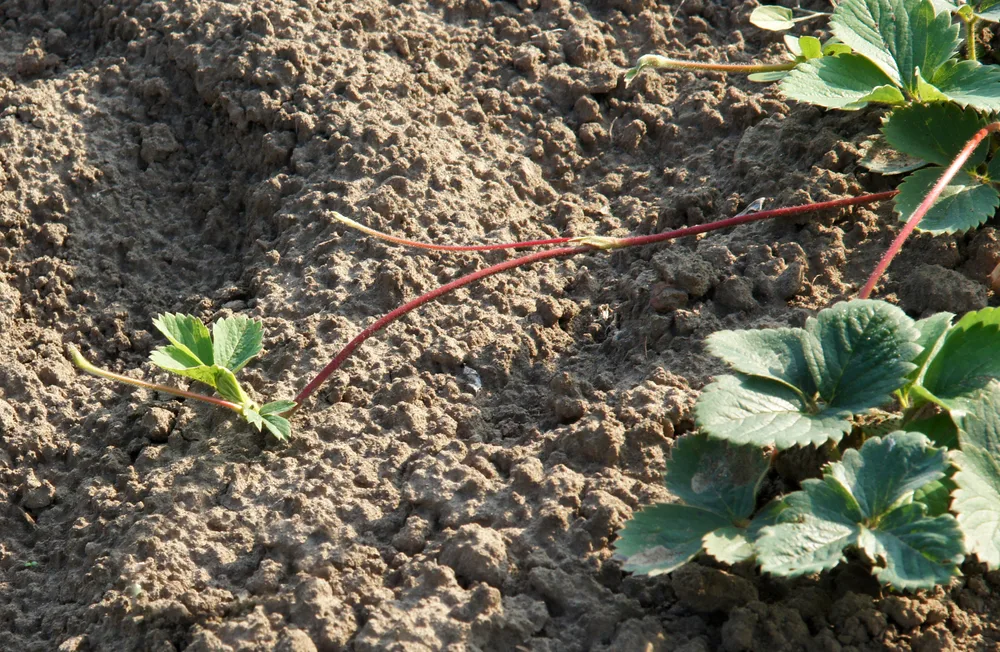
This is the most common, and easiest way to propagate strawberries. Strawberries can also be propagated by division, and by seed but both methods are significantly more difficult and don’t yield the same results.
How To Propagate Strawberries From Runners
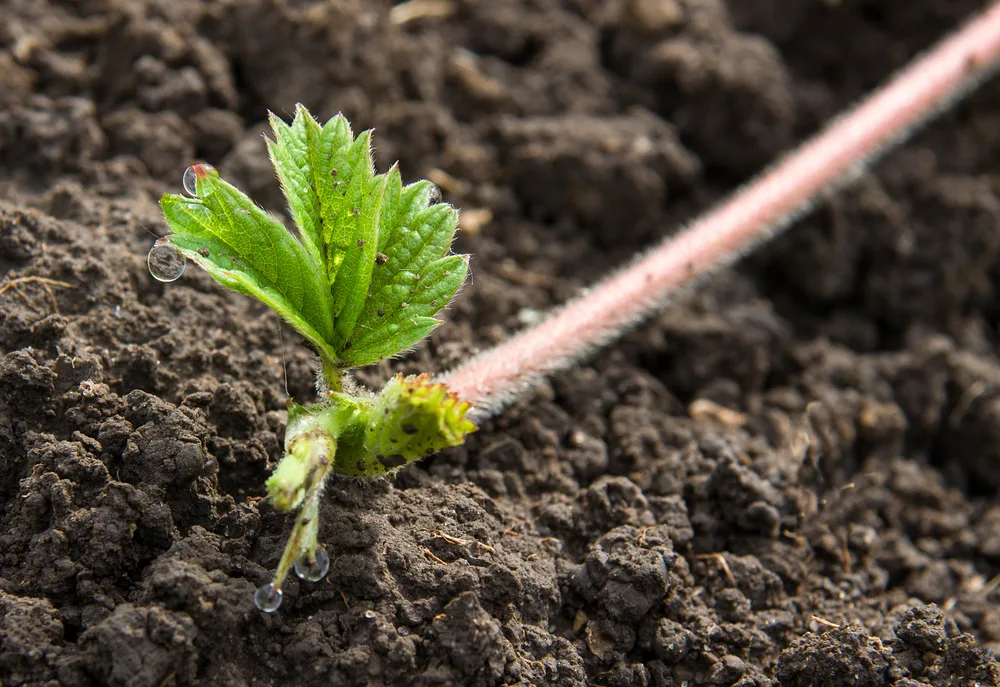
Let’s take a look at how you can gain new strawberry plants from runners sent out by strawberry plants.
Propagating strawberries with runners is by far the most common way to get new strawberry plants. Most June-bearing and everbearing varieties send out runners. The exceptions are generally wild strawberry varieties which must usually be propagated by seed.
Strawberry runners are technically stolons.
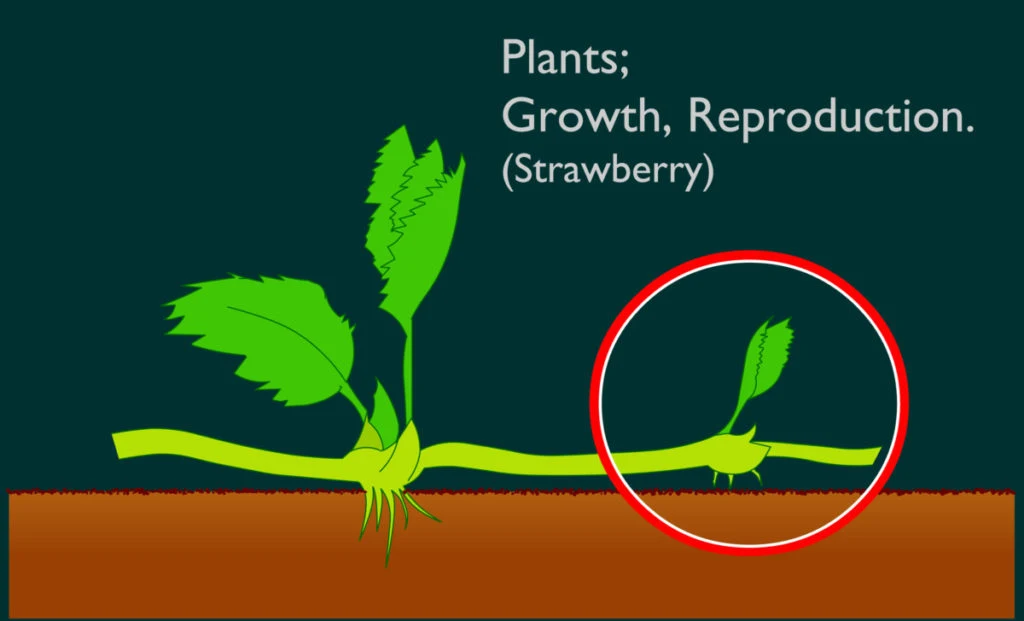
These are horizontal stems which grow from the base of the plants and form nodes. New strawberry plants will form at these nodes.
First, the nodes will develop adventitous roots. These specialist roots grow and, where they make contact with a suitable growing medium, will continue to grow and turn into a new clone plant. The plants formed on the stolons of a strawberry plant are genetically identical to their parent plant.
When To Let Runners Grow
Early in the growing season, strawberry plants may send out runners when the plants are still in fruit. It is generally best to cut these off to allow the plants to focus on fruit production.
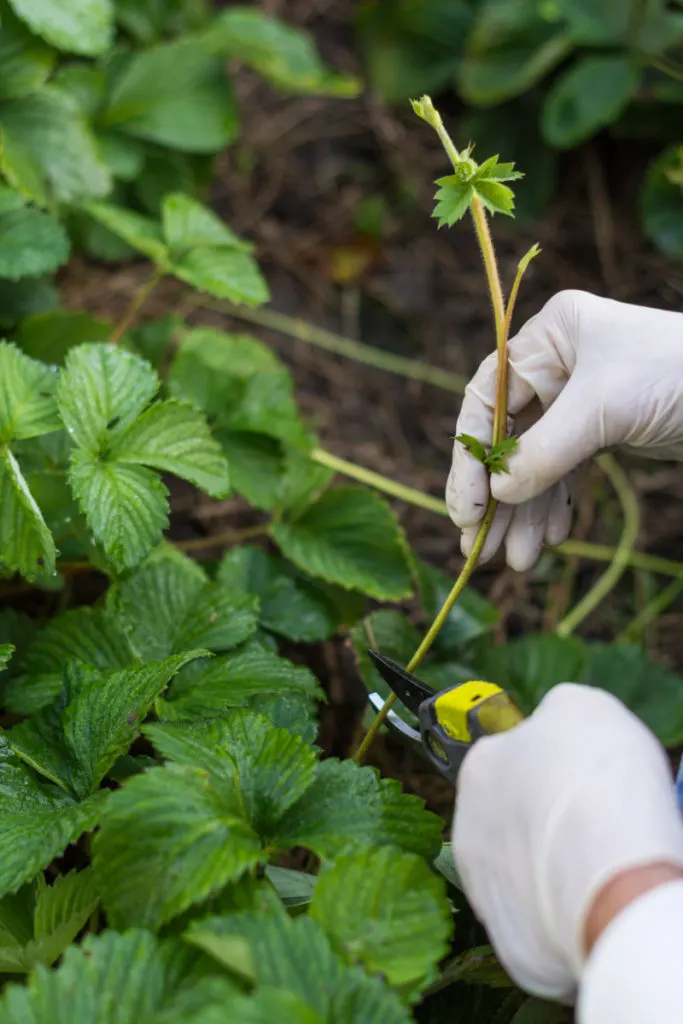
Once the fruiting period has finished, however, you should let the runners form.
If you would like to create a permanent, dedicated strawberry patch, or want to use strawberries as ground cover, you can simply leave runners to take root as they will.
But one of the good things about these runners is that they are generally long enough and flexible to direct. Gardeners can guide them to where they want them to grow. This should be undertaken in late summer, or very early fall at the latest.
Guiding Strawberry Runners to Where You Want Them to Grow
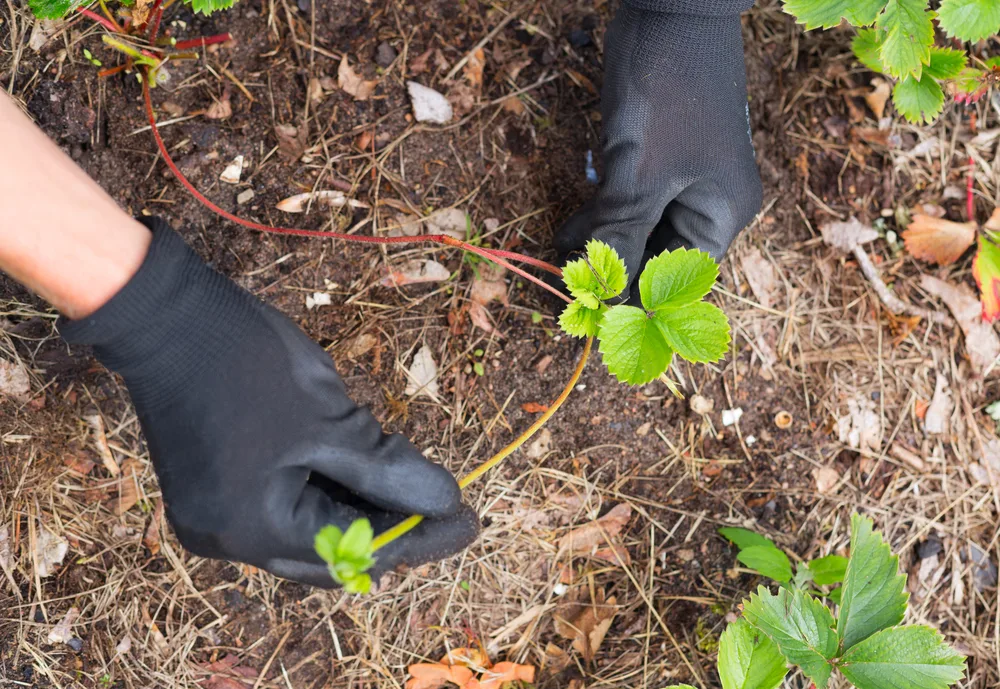
There are a number of ways in which gardeners can direct the runners. One common idea is to operate a form of row growing. In this type of strawberry patch, runners from the parent plants are guided to create a second row of plants next to the first.
The advantage of doing things this way is that you can easily keep track of the age of your plants, which ones are older and which are younger.
This can be helpful because strawberry plants will usually decline in yield after a few years (typically 3-5 years depending on cultivar). At this point, the oldest and least productive plants can be removed to make space for a new row of runners.
Runners are guided into position along a new row (or in a bare patch of soil in a less ordered scheme). They can then be pegged down to hold the nodes or budding roots against the soil.
How To Peg Down Strawberry Runners
In order to peg down your plants you can use:
- Sections of metal wire bent into U-shapes.
- Old hook-style tent pegs.
- Old clothes pegs inserted upside down into the soil.
- Bendy twigs formed into U-shape pegs.
- Forked sticks shoved into the soil, with a prong on either side of the runner.
- Two thin stones with a third stone (heavy enough to hold the runner in place) positioned on top of them. (Just take care not to crush the runner when placing your stones, as nutrients need to flow from the parent plant until the roots of the new plants are established.)
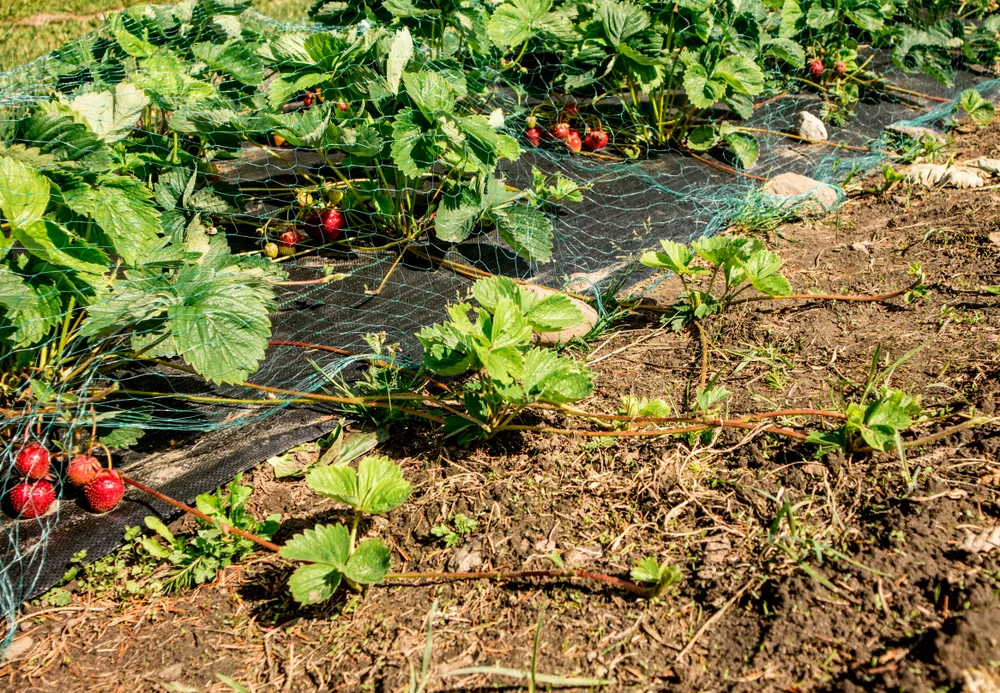
Pegging or holding the runner down against the soil surface will allow root systems to form. Keep your new runners well watered as this will help to promote root growth.
Guiding Runners into Pots or Containers
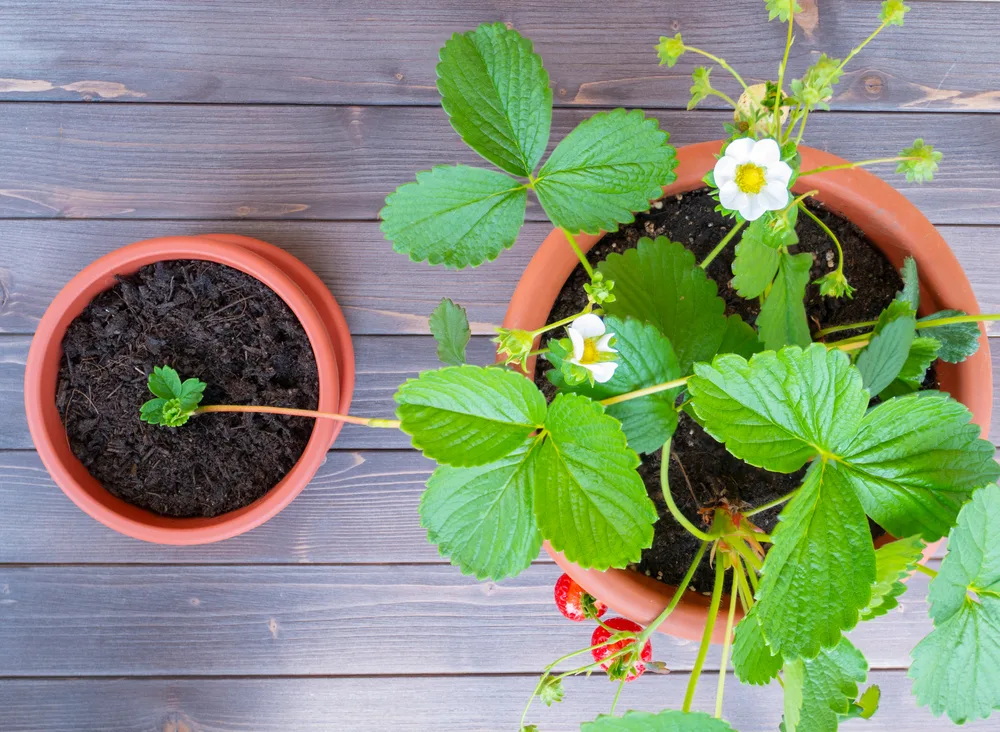
Another option to consider is guiding the runners to root in pots or containers. Position these close to the parent plant and simply peg down the runners to let them root into the growing medium inside these pots or containers.
The advantage of rooting runners in pots or containers is that you can then easily move them to a different part of your garden.
You could also move them to an undercover growing area so you can bring forward your harvest and get a slightly earlier strawberry crop the following spring. This would also be a good idea if you would like to sell some strawberry plants. Or if you wish to gift some to friends, family, neighbours, or others in your community.
Separating Strawberry Runners From Parent Plants
You will be able to tell when the strawberries have rooted by gently pulling on the plants. Once the roots have formed, they will not easily lift away from the soil surface. Once the runners have rooted, the long stolons will eventually die back and break, severing the connection.
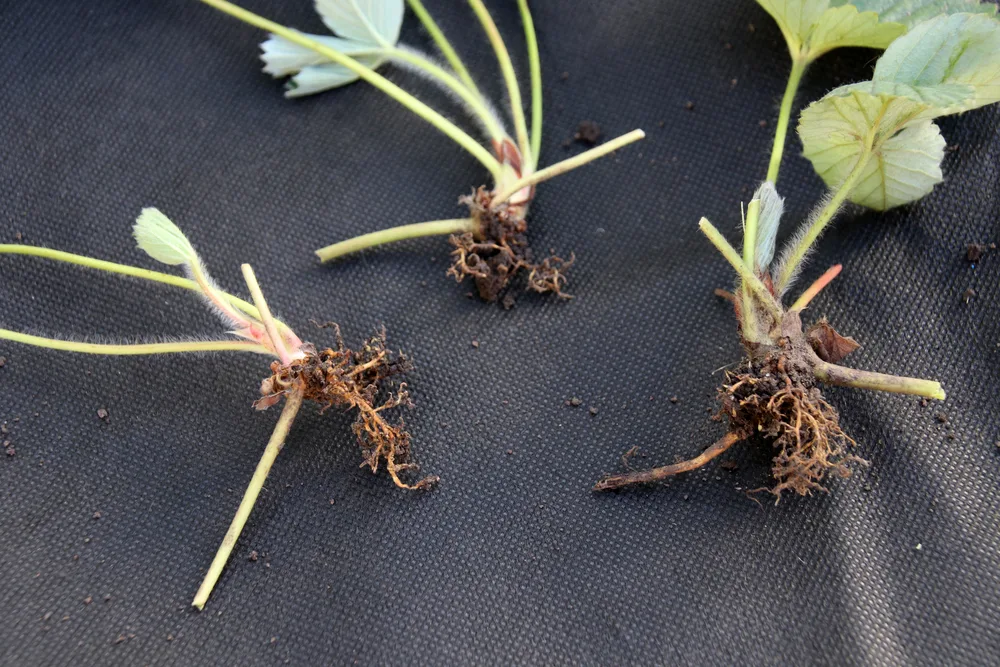
If you wish to move your plants before this happens, you can simply cut the runners off as soon as the new root systems have formed.
You now have stand-alone specimens that can survive as independent plants. You can move them to other locations if you wish.
It really is as easy as that!
Now all that’s left to do is enjoy your huge strawberry harvests.
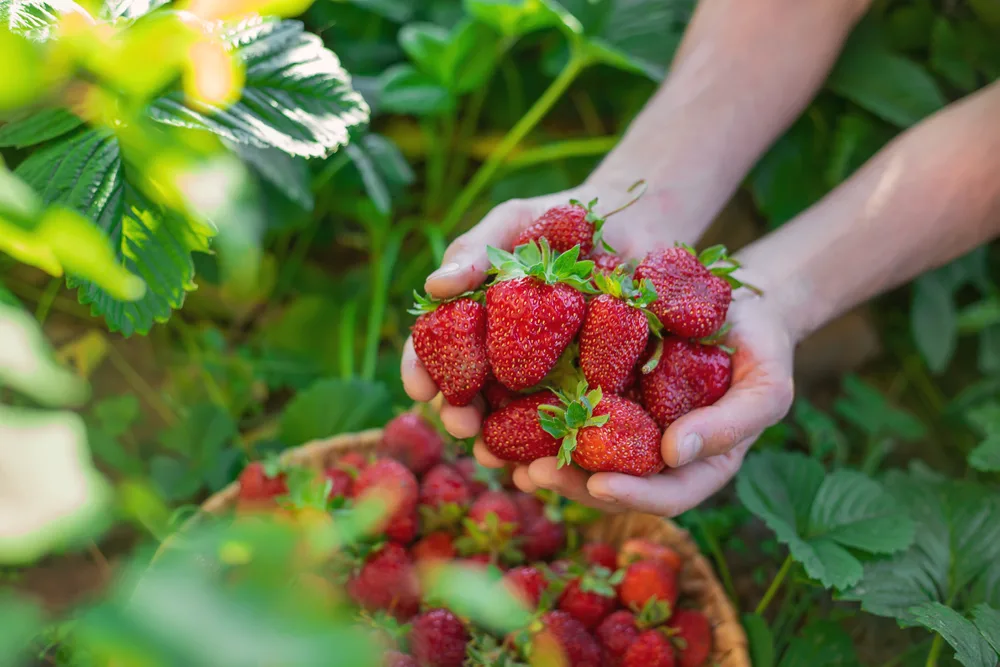
More Strawberry Gardening Tutorials & Ideas
How To Plant a Strawberry Patch That Produces Fruit For Decades
7 Secrets for Your Best Strawberry Harvest Every Year
15 Innovative Strawberry Planting Ideas For Big Harvests In Tiny Spaces
11 Strawberry Companion Plants (& 2 Plants To Grow Nowhere Near)
How to Make an Easy to Water Strawberry Pot
10 Fantastic and Unusual Strawberry Recipes that go Beyond Jam

Get the famous Rural Sprout newsletter delivered to your inbox.
Including Sunday musings from our editor, Tracey, as well as “What’s Up Wednesday” our roundup of what’s in season and new article updates and alerts.

